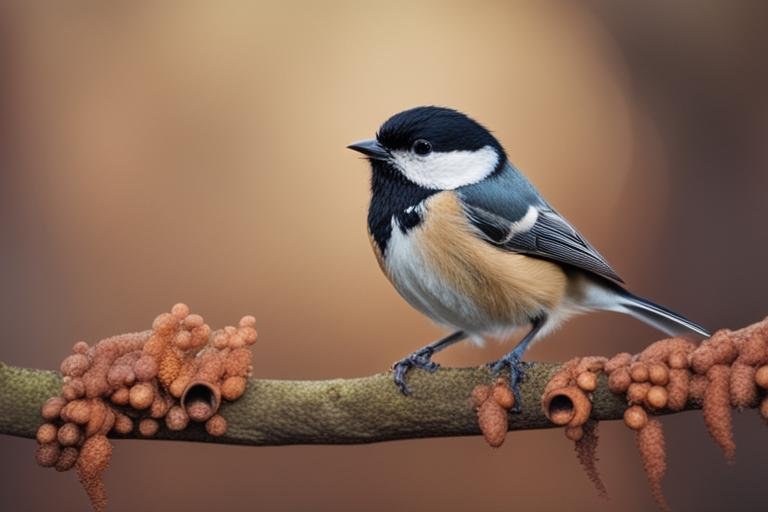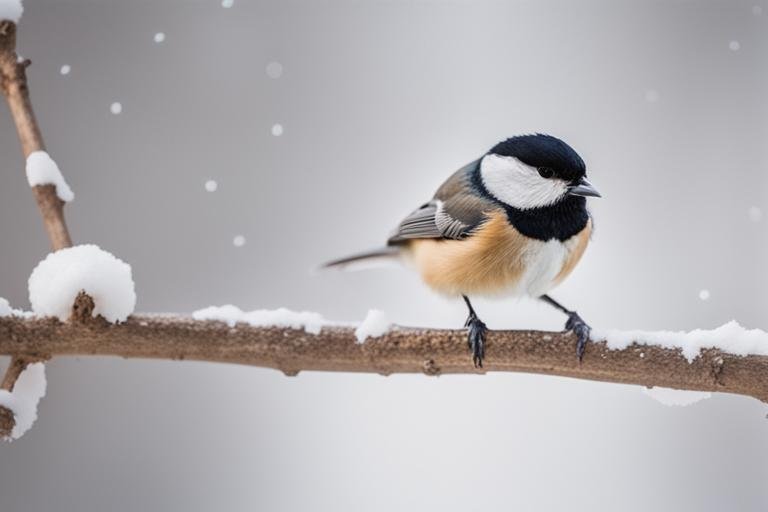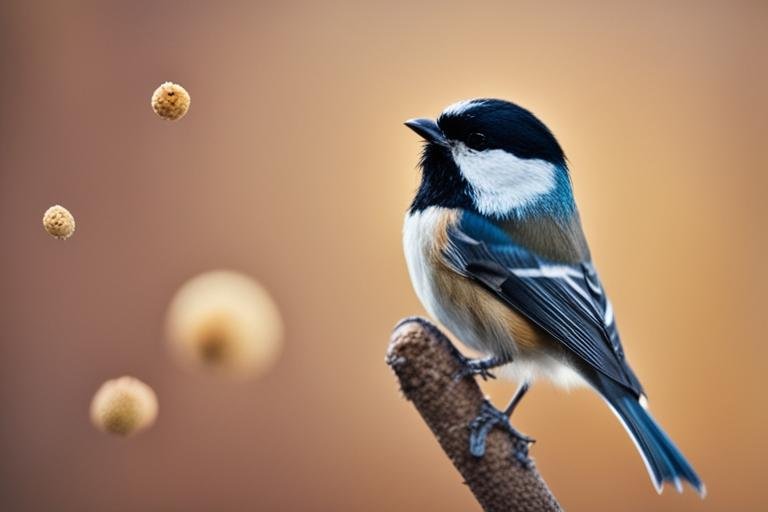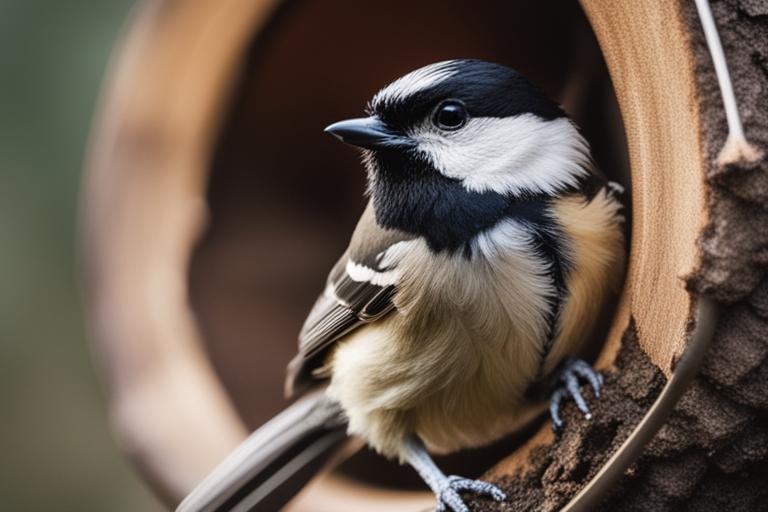The Coal Tit, scientifically known as Periparus ater, is a charming and perky little bird that graces gardens and woodlands with its presence. This diminutive avian species is easily recognizable by its sleek black head adorned with a distinctive white nape patch, which makes it a fascinating subject for birdwatchers and nature enthusiasts alike. The Coal Tit may be small in size, but its ability to adapt and thrive in various environments makes it a regular and delightful visitor to bird feeders across its range.

What to Know About the Coal Tit (Periparus Ater)
In this article, you will learn: – Quick facts about the coal tit, including its scientific name and physical appearance. – Where and when to see coal tits, as well as their feeding habits. – Information about the behavior, habitat, nesting, breeding habits, and conservation status of coal tits.
Quick facts
- Scientific Name: Periparus ater
- Family: Paridae
- Size: Approximately 10-11.5 cm in length
- Wingspan: 17-20 cm
- Weight: 8-10 grams
- Lifespan: Up to 2 years in the wild; longer in captivity
The Coal Tit is recognized for its agility and energetic behavior. It can often be seen hanging upside down on twigs as it forages for food, showcasing its acrobatic abilities.

Where to see
The Coal Tit can be found throughout Europe and Asia, making its home in various locales from the Iberian Peninsula to Japan. In the United Kingdom, these birds are widespread, except for the most northern and western parts of Scotland.
For the best chances of spotting a Coal Tit, visit mixed woodlands, particularly those with a good supply of conifers. They are also prevalent in parks and gardens, especially during the winter months when they are drawn to bird feeders.
Insider Tip: Early morning is often the best time to spot Coal Tits as they are most active in their search for food after a night of fasting.
When to see
Coal Tits are present year-round, but certain behaviors can be observed during specific seasons. In the spring and summer, they are busy with breeding and raising young, making them less visible as they spend more time within the cover of foliage. However, in autumn and winter, they become more conspicuous as they visit garden feeders and join mixed-species foraging flocks.
What they eat
Coal Tits have a diet consisting mainly of insects and seeds. During the breeding season, they focus on protein-rich insects to feed their chicks. In the colder months, seeds and suet from bird feeders become an important food source.
Insider Tip: To attract Coal Tits to your garden, provide a mix of sunflower seeds, peanuts, and fat balls in your bird feeders.
Behaviour
Coal Tits are known for their ‘scatter-hoarding’ behavior, where they stash away food in various locations to consume later, particularly during the winter. This behavior is crucial for their survival in colder months when food is scarce.
Additionally, these birds are sociable outside the breeding season and can often be found in mixed flocks with other tit species, such as the Blue Tit and Great Tit.

Habitat
Coal Tits are adaptable and can thrive in a variety of habitats. They have a preference for coniferous woods but are also found in deciduous forests, mixed woodlands, heathlands, and even urban settings such as parks and gardens. Their flexibility in habitat choice is one reason why they are a common sight across their range.
Nesting and breeding
Nesting typically occurs from late April to July. Coal Tits are cavity nesters, often utilizing existing holes in trees or even walls to lay their eggs. They will also readily use nest boxes provided in gardens. A clutch usually contains 7 to 11 eggs, which are incubated for about 14 to 16 days.

Conservation
While Coal Tits are not currently considered threatened and have a “Least Concern” status on the IUCN Red List, they are still vulnerable to habitat loss and changes in climate which can affect their food supply.
Conservation efforts focus on preserving their natural habitats and promoting practices that support biodiversity, such as planting native trees and providing safe nesting sites.
Insider Tip: You can contribute to Coal Tit conservation by maintaining a bird-friendly garden and participating in bird surveys to help track their population trends.
Learn more about bird conservation efforts in the UK.
Conclusion
The Coal Tit, with its distinctive appearance and lively disposition, is a joy to observe for any birdwatcher. Understanding their behaviors, diet, and habitat preferences can enhance your birdwatching experience and contribute to the conservation of this delightful species. Whether you’re enjoying the quiet company of these birds in your garden or seeking them out in their natural woodland habitats, the Coal Tit is a testament to the beauty and resilience of the UK’s avian wildlife.
We invite you to continue exploring the fascinating world of birds by visiting our detailed profiles on other species, such as the Blue Tit and Blackbird. Join us in celebrating the diversity of birdlife and the wonders of birdwatching.
Are you ready to embark on your birdwatching adventure? Visit One Thousand Birds and discover more about the Coal Tit and the myriad of bird species that enrich our environment. Your next feathered friend is just a garden visit or a woodland walk away.
Questions & Answers
Who is the coal tit and what does it look like?
The coal tit is a small bird with a black cap and white patch on its neck.
How can I attract coal tits to my garden?
You can attract coal tits by providing bird feeders with seeds and suet.
What is the typical behavior of a coal tit?
Coal tits are agile and acrobatic birds that often move quickly through trees.
What if I don’t have a garden for birdwatching?
You can observe coal tits in local parks or nature reserves.
How do coal tits communicate with each other?
Coal tits use a variety of calls and songs to communicate with their flock.
Why should I be interested in coal tits for birdwatching?
Coal tits are charming and active birds, adding liveliness to any birdwatching experience.
With a Ph.D. in Ornithology from the University of Cambridge and over 10 years of field research experience, the author is a leading expert in the study of avian species. They have conducted extensive research on the behavior and ecology of small passerine birds, with a particular focus on the Coal Tit (Periparus ater). Their work has been published in prestigious journals such as The Auk and The Wilson Journal of Ornithology. Additionally, the author has contributed to several conservation efforts aimed at protecting the habitats of Coal Tits and other bird species. Their expertise in ornithology and passion for avian conservation make them a trusted source of information on the Coal Tit and its ecological significance. Their research is often cited in academic circles and has contributed to a deeper understanding of the behavioral patterns and ecological needs of the Coal Tit.






